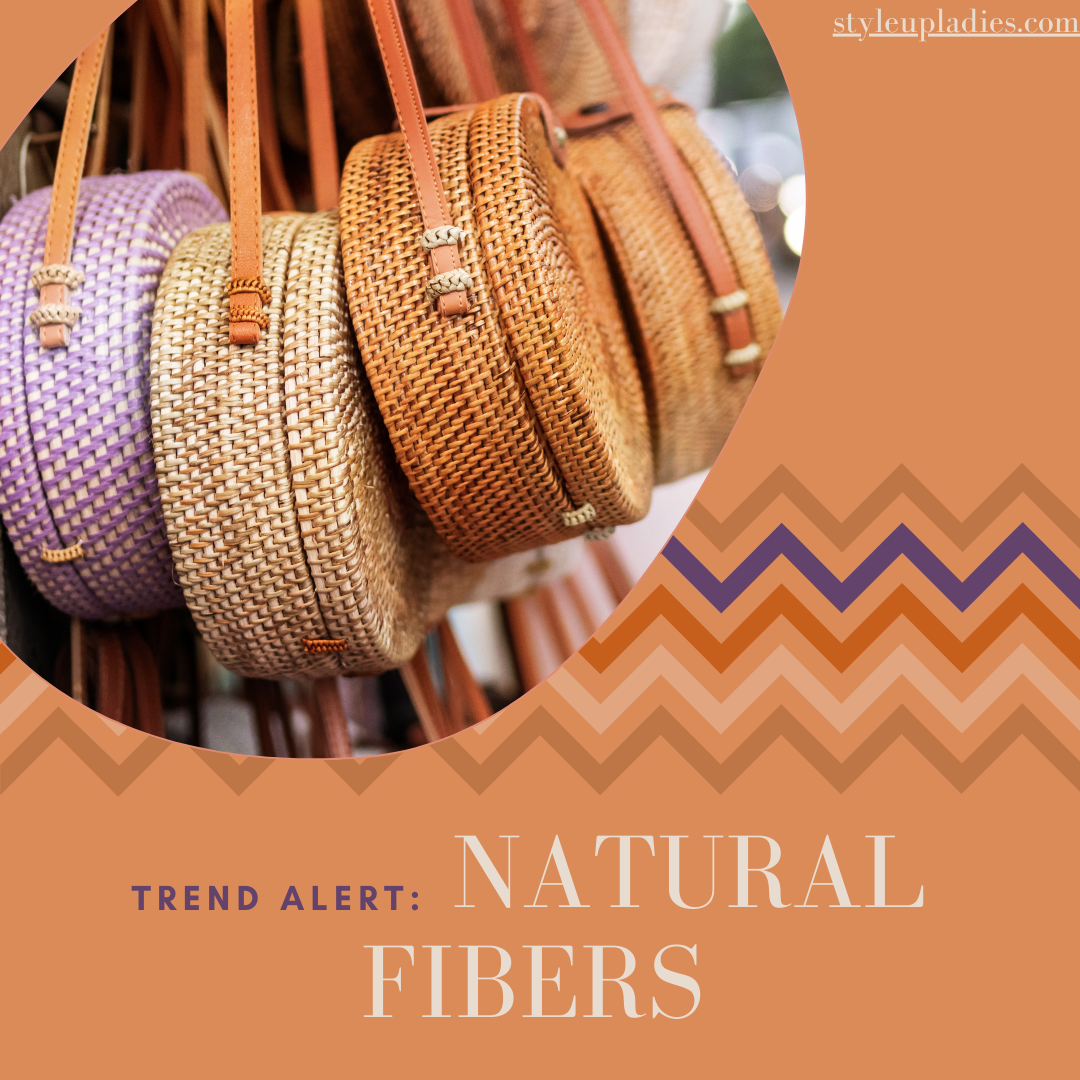In today’s world, there’s a growing emphasis on sustainability and being eco-friendly. Natural fibers, sourced from plants, animals, and minerals, stand out in the fashion industry.
Unlike man-made or synthetic materials, these fibers connect us to nature and tradition. They represent a greener choice, aligning with the push towards environmental consciousness in modern fashion trends.
Table of Contents
What are Natural Fibers?
Natural fibers are textile fibers derived from nature. They are predominantly sourced from plants and animals, with a few exceptions coming from minerals.
Unlike synthetics, which are typically made from petroleum-based products, natural fibers are biodegradable, making them more sustainable in the long run. Examples of such fibers include cotton, wool, silk, jute, and linen.

Where do Natural Fibers come from?
Natural fibers used in clothing are derived from various sources found in nature. Examples of natural fibers include cotton, linen, wool, and silk. These fibers can be harvested from different plant and animal sources, showcasing the diversity of materials available for textile production.
Cotton, a widely used natural fiber, comes from the fluffy fibers surrounding the seeds of the cotton plant. Linen is obtained from the stalks of the flax plant, while wool is sourced from the fleece of sheep or other animals like goats and alpacas. Silk, known for its luxurious feel, is produced by silkworms spinning their cocoons.
The versatility and sustainability of natural fibers make them popular choices in the fashion industry, providing breathable and comfortable options for eco-conscious consumers.
Properties of Natural Fibers
Breathability:
One of the reasons clothes made of natural fibers are sought after, especially in warmer climates, is because of their excellent breathability. Fabrics like cotton and linen allow for good air circulation, making them comfortable to wear.
Additionally, this breathability helps regulate body temperature, reducing the chances of excessive sweating. Natural fabrics also dry quickly, which further enhances their comfort quotient.
Moisture Absorption:
Natural fibers, especially wool, are known for their hygroscopic qualities, meaning they can absorb moisture from the environment. This makes them ideal for humid climates and for activewear.
The moisture-wicking capabilities of these fibers keep the skin dry, minimizing the risk of rashes or irritations. Additionally, they prevent the build-up of odor, making the wearer feel fresher for longer.

Durability:
Fibers like hemp and jute are incredibly strong and durable. They are often used for making ropes and coarse materials due to their resilience. This inherent strength means that garments made of these fibers tend to last longer, resisting wear and tear.
Natural fibers also possess a certain elasticity which helps the fabric maintain its shape and structure over time.
Biodegradability:
Unlike synthetic fibers, which can take hundreds of years to decompose, natural fibers biodegrade much faster, reducing environmental impact. This attribute not only lessens landfill waste but also ensures that these fibers return to nature without releasing harmful chemicals.
The decomposition process of natural fibers enriches the soil, promoting a healthier ecosystem.

Thermal Insulation:
Wool, in particular, is an excellent insulator, making it a preferred choice for winter clothing. Its unique structure traps pockets of air, providing natural insulation against cold temperatures.
Moreover, wool’s ability to absorb moisture without feeling wet ensures that the wearer remains warm even if the fabric becomes damp.
Natural Feel:
One of the most distinct advantages of natural fabrics is their texture and feel against the skin. Synthetics often can’t replicate the comfort and softness of natural fibers.
The organic structure of natural fibers provides a soft and smooth touch, reducing the likelihood of skin irritations. Moreover, the natural luster of these fabrics imparts a premium, luxurious feel to garments.
Natural Fabrics and Sustainability
Facing today’s environmental challenges, natural fabrics emerge as a guiding light of sustainable hope. These fabrics typically involve fewer harmful chemicals in their cultivation compared to synthetic materials, ensuring both environmental and worker safety.
Their swift biodegradability stands in stark contrast to synthetics, which can pollute for centuries.

Technological advancements in the textile sector have made the processing of natural fabrics more water-efficient.
Additionally, the cultivation of plant-based fibers like cotton and hemp offers the dual benefits of carbon dioxide absorption and promoting biodiversity through crop rotation.
Furthermore, producing natural fabrics can strengthen local economies, especially in developing regions, by offering farmers a steady source of income.
Unlike petroleum-reliant synthetics, natural fibers come from renewable sources, affirming their place as the environmentally and economically sustainable choice for the future.
Clothes made of Natural fibers
Clothes made from natural fibers have been a cornerstone of textiles for millennia, drawing primarily from resources provided by nature, such as plants, animals, and minerals.
Examples include the softness of cotton derived from cotton plants, the warmth of wool sheared from sheep, and the luxuriousness of silk spun by silkworms. These natural textiles are celebrated not only for their innate comfort and breathability but also for their environmental advantages.

Unlike synthetic counterparts that often rely on petroleum and can take centuries to decompose, natural fiber clothes are biodegradable, leaving a minimal footprint on our planet.
Moreover, as the world leans more into sustainable practices, the appeal and importance of such naturally sourced clothing continue to grow.
Advantages of Natural Fibers
Breathability: Natural fibers, such as cotton and linen, are breathable, ensuring comfort in clothing.
Comfort: Soft textures, like those in wool and silk, provide a comfortable feel against the skin.
Sustainability: Natural fibers are often renewable and biodegradable, contributing to eco-friendly practices.
Disadvantages of Natural Fibers
Wrinkling: Natural fibers may be more prone to wrinkles compared to synthetic counterparts.
Shrinkage: Some natural fibers, like cotton, may shrink when exposed to certain conditions.
Color Fading: Natural fibers can experience color fading over time.
Chemical Use: Production processes may involve the use of pesticides and chemicals, raising environmental concerns.
Natural Fibers in Modern Fashion
So, natural fibers are making a big splash in today’s fashion world. It’s not just about looking good anymore – it’s about feeling good about what you wear too.
Designers are getting really creative with natural materials. They’re not just sticking to plain old cotton t-shirts. Nope, they’re mixing things up. Imagine a sleek blazer made from a blend of wool and hemp, or a flowing summer dress crafted from bamboo fabric. Cool, right?
Some brands are even bringing back old-school techniques. Like hand-weaving or natural dyeing, but with a modern twist. Picture this: a hand-woven silk scarf, dyed with plant-based colors, but in a super trendy pattern. It’s like the best of both worlds – traditional craftsmanship meets modern style.
And it’s not just high-end fashion either. More and more everyday brands are jumping on the natural fiber bandwagon. You can find jeans made from organic cotton, workout gear made from merino wool, and even underwear made from bamboo fabric. It’s becoming easier for everyone to make eco-friendly fashion choices.
The best part? These clothes often feel amazing to wear. Natural fibers tend to be breathable and comfortable, so you’re not just helping the planet – you’re treating yourself too!
Some brands are even bringing back old-school techniques. Like hand-weaving or natural dyeing, but with a modern twist. Picture this: a hand-woven silk scarf, dyed with plant-based colors, but in a super trendy pattern. It’s like the best of both worlds – traditional craftsmanship meets modern style.
And it’s not just high-end fashion either. More and more everyday brands are jumping on the natural fiber bandwagon. You can find jeans made from organic cotton, workout gear made from merino wool, and even underwear made from bamboo fabric. It’s becoming easier for everyone to make eco-friendly fashion choices.
The best part? These clothes often feel amazing to wear. Natural fibers tend to be breathable and comfortable, so you’re not just helping the planet – you’re treating yourself too!
Care and Maintenance of Natural Fiber Clothing
Now, let’s talk about how to keep your natural fiber clothes looking great. It’s not as tricky as you might think, and a little care goes a long way.
First off, always check the label. Different fibers need different care. Wool, for example, likes to be washed gently in cool water. Cotton can handle warmer temperatures. Silk? That’s usually a job for hand washing or dry cleaning.
Here’s a general rule of thumb: be gentle. Use cool or warm water instead of hot, and don’t go crazy with the spin cycle. Many natural fibers actually prefer to be air-dried. It’s better for the fabric and saves energy too!
When it comes to storage, natural fibers like to breathe. Avoid plastic bags and opt for cloth garment bags or just hang them in your closet. For sweaters and knits, folding is usually better than hanging to keep their shape.
Stains happen, but don’t panic! Many natural fibers are actually pretty good at releasing stains. Just treat the spot quickly with a gentle stain remover or even just plain water.
One cool trick: for wrinkly linen or cotton, hang the item in your bathroom while you shower. The steam can help smooth out those creases naturally.
Lastly, think about the detergent you use. Natural, eco-friendly detergents are not only better for the environment, but they’re often gentler on natural fibers too. Win-win!
Remember, taking good care of your clothes means they’ll last longer. And that’s great for both your wallet and the planet. Plus, there’s something satisfying about wearing a well-cared-for piece of clothing, knowing it’s made from natural, earth-friendly materials.
So there you have it! Natural fibers are making waves in fashion, and with a little TLC, your natural fiber clothes can keep you looking and feeling great for a long time.
FAQs
Are clothes made from natural fibers more expensive?
Sometimes, yeah. Growing and processing natural fibers can cost more than making synthetic ones. But here’s the thing – natural fiber clothes often last longer. So, even if you pay more upfront, you might save money in the long run because you won’t need to replace them as often.
Can natural fibers be as good as synthetics for sports and exercise?
You might be surprised! While synthetics are often used for workout gear, natural fibers have some tricks up their sleeve. Take wool, for instance. It naturally wicks away sweat and doesn’t hold onto smells. Pretty neat for gym clothes, right? Scientists are also finding new ways to make natural fibers perform even better.
How do natural fibers help with the plastic problem in our oceans?
Here’s a cool fact: when you wash clothes made from synthetic fibers, tiny bits of plastic wash away with the water. These end up in rivers and oceans. But natural fibers? They break down naturally over time. So if any bits come off in the wash, they won’t stick around forever like plastic does.
Are all natural fibers good for the environment?
Well, they’re generally better than synthetic ones, but it’s not always that simple. How the fibers are grown and processed matters a lot. Regular cotton, for example, often needs lots of water and pesticides to grow. But if you go for organic cotton or other responsibly grown natural fibers, those are usually much better for the environment.
Remember, fashion doesn’t have to hurt the planet. By choosing clothes made from natural fibers and taking good care of them, you can look great and feel good about your choices too!
Conclusion
Natural fibers are not just a nod to the past but a bridge to a sustainable future. They blend tradition with modernity, offering fashion solutions that are both chic and eco-friendly.
As consumers become more environmentally conscious, the demand for natural fabrics will only increase, making them a mainstay in sustainable fashion.






Leave a Reply